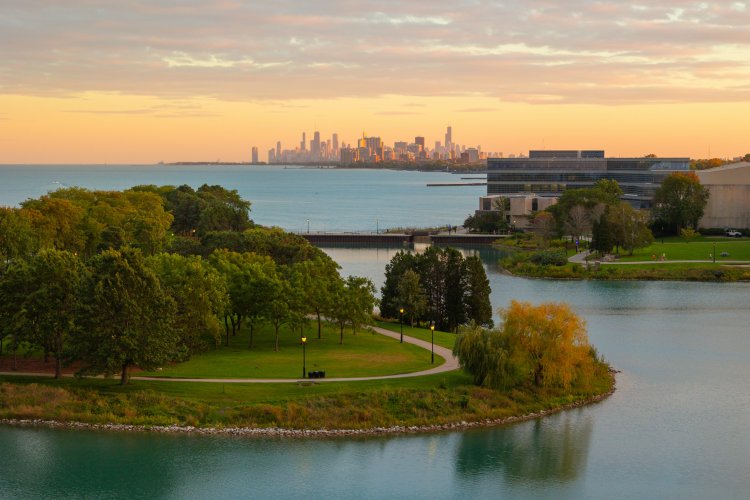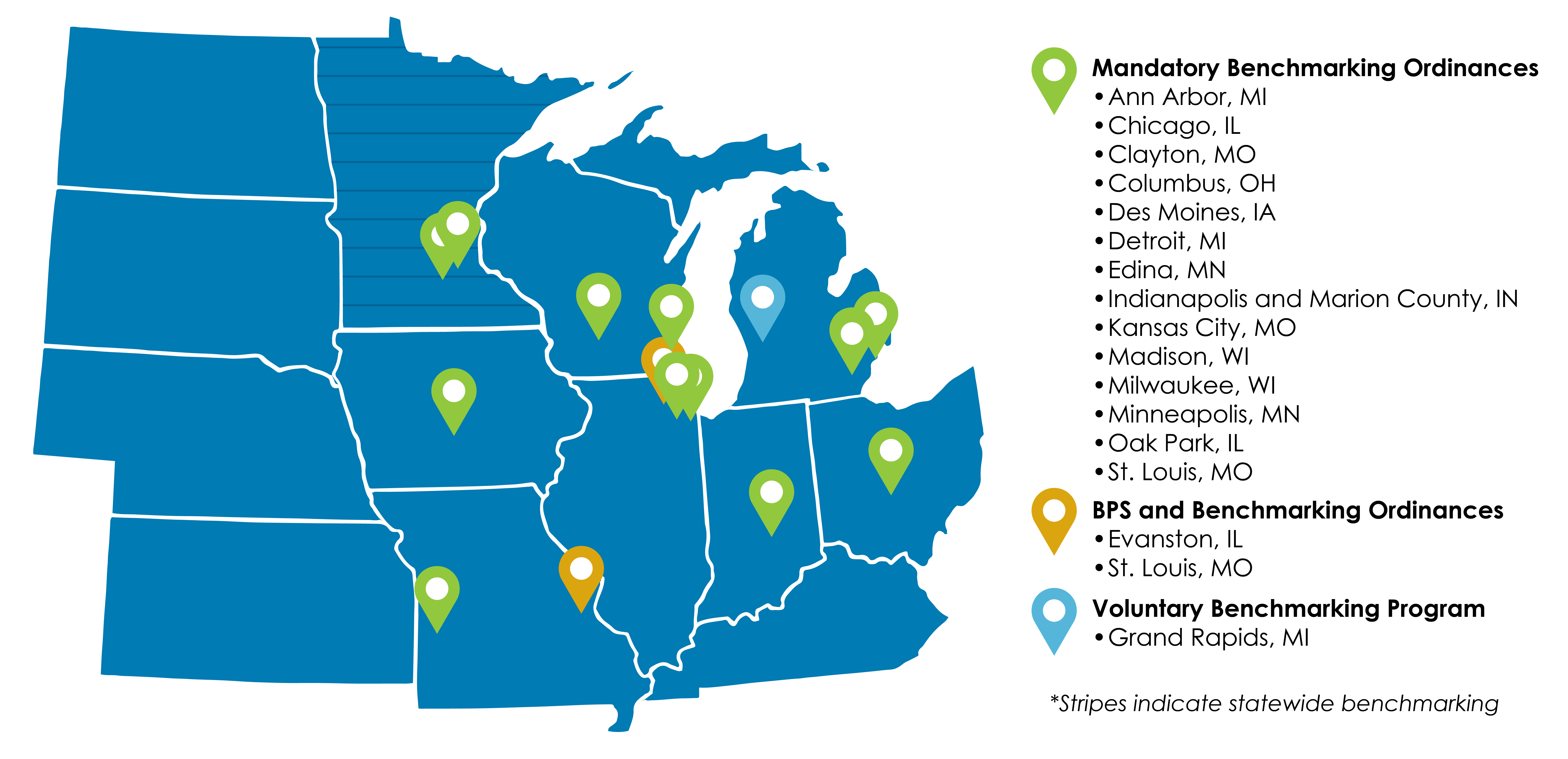
Evanston, Illinois recently passed the Healthy Buildings Ordinance (HBO), taking action to address emissions in their existing buildings. The HBO implements a Building Performance Standard (BPS), the first city in Illinois, and only the second city in the Midwest. Evanston, situated 12 miles north of Chicago and home to over 75,000 residents and Northwestern University, voted to approve the ordinance on March 10th, 2025.
A BPS is used to address a municipality’s emissions through setting emissions limits in certain existing buildings that become more stringent gradually over time. While the policy sets reduction targets, it does not mandate specific improvements. This allows buildings to choose energy management methods or upgrades that align with their capital improvement plans. In Evanston, the standards will apply to around 500 of their largest buildings (over 20,000 square feet). Together, these buildings account for 50% of the City’s total emissions.
The HBO does not define the required emissions reductions—yet. Instead, as is common practice, the ordinance defines how community members will work together to establish these standards within the next year. The full timeline of the Healthy Buildings Ordinance is shown below in Figure 1. In the coming months, two advisory boards will be established: a Healthy Buildings Technical Committee and a Healthy Buildings Accountability Board. The Technical Committee will be at the heart of creating the building standards. Interim targets will be set for 2030, 2035, 2040 and 2045 with the final target set for 2050. The Accountability Board will identify buildings needing an alternative compliance pathway and establish appropriate targets.

Figure 1: HBO timeline. Credit: City of Evanston
Three performance metrics will be calculated in the development process:
- Maximum normalized site energy use intensity (Site Energy / Gross Floor Area)
- Maximum normalized onsite and district thermal greenhouse gas emissions
- Minimum renewable electricity procurement
These metrics will be established based on use type (i.e. office buildings and schools). Use types will have different targets, but all buildings of the same type will have the same target, barring exceptions. Fines for noncompliance will also be established during the rulemaking process. 90% of fines will go to a decarbonization fund to support compliance.
Evanston is no stranger to sustainability. In their 2018 Climate Action and Resilience Plan (CARP), the City set the goal to be carbon neutral by 2050. The BPS will work to achieve these reductions along with other mitigation strategies proposed in the CARP. Though Evanston leads BPS efforts in the state, they are not alone in the region. Evanston joins St. Louis, who has had a BPS since 2020. Currently, 17 Midwest cities have benchmarking ordinances, which require buildings to track energy use but not meet specific targets. Fifteen municipalities have enacted BPS across the country, with dozens more committed through the National BPS Coalition.

Figure 2: Municipal Benchmarking Map
MEEA and Slipstream have been providing technical assistance to the City of Evanston for their BPS and other building energy efficiency-focused policies. If your community is interested in technical assistance, please contact Alison Lindburg.